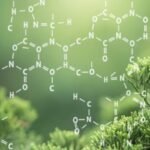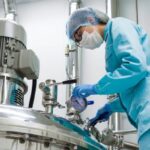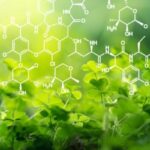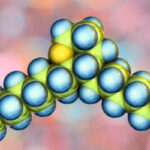We explain what inorganic matter is and some examples. What is organic matter and its differences with inorganic matter.

What is inorganic matter?
When we talk about inorganic matter we are referring to all those chemical compounds whose molecular structure is not based primarily on the carbon atom and that, therefore, are not closely linked to the chemistry of life (organic chemistry), nor are they biodegradable, nor generally combustible.
In other words, inorganic matter is that which is not mostly a product of the chemical reactions of life, but rather is obeys the logic of ionic and electromagnetic attraction thus experiencing much faster reactions. This does not mean that they are substances completely foreign to living beings, since many of them are present in their bodies or serve as a food substrate (especially in the case of autotrophic living beings).
Water, for example, is considered an inorganic biomolecule, that is, inorganic matter necessary for life. Inorganic chemistry is what is responsible for studying this type of matter.
See also: Inorganic compound
Examples of inorganic matter
Some common inorganic substances are: water (H2O), carbon dioxide (CO2), ammonia (NH3) sulfuric acid (H2SW4), hydrochloric acid (HCl), sodium chloride (NaCl). Metals, terrestrial minerals and the various salts they form are also examples of inorganic matter.
What is organic matter?

Unlike inorganic matter, organic matter is that linked to the chemistry of life and that composes the bodies, substances and derivatives of living beings. Organic matter is chemically composed around carbon as a fundamental element, which is why organic chemistry is also known as “carbon chemistry.”
organic matter It has a range of reactions very different from inorganic matter and is capable of forming long molecular chains (macromolecules) like those that make up the proteins and sugars essential for life as we know it.
Continue in: Organic matter
Differences between organic and inorganic matter

The differences between organic and inorganic matter can be summarized as follows:
- Organic matter is generated naturally by living beings, although organic compounds are also currently produced artificially in chemical laboratories, for example, many types of plastics. On the other hand, inorganic matter is formed due to natural reactions in which life is not involved, although some inorganic compounds such as CO2 They occur in reactions that are part of living beings. Inorganic compounds can also form in chemical laboratories.
- Organic matter is chemically composed around carbon atoms, this being its fundamental element. The inorganic has other elements in its place, although there are also inorganic compounds that contain carbon atoms, for example, carbon dioxide (CO2) and carbon monoxide (CO).
- Organic matter is biodegradable, that is, it can be decomposed by the action of biological mechanisms or simple deterioration, reducing it to its basic elements. Not so inorganic, which, although it may suffer deterioration over time due to corrosion and oxidation, cannot be decomposed by biological mechanisms.
- Inorganic matter is generally non-combustible, while the main known fuels are of organic origin, such as petroleum.
- Organic matter can present isomerism (molecules of the same constitution but different physical-chemical properties, due to a different orientation of the atoms), while inorganic matter generally does not.
References
- “Inorganic substance” on Wikipedia.
- “Inorganic matter” in Aguamarket.
- “Inorganic matter” in Educational Nature.
- “Understanding Organic and Inorganic Compounds” (video) in Chemistry at Home.
- “Inorganic compound” in The Encyclopaedia Britannica.





